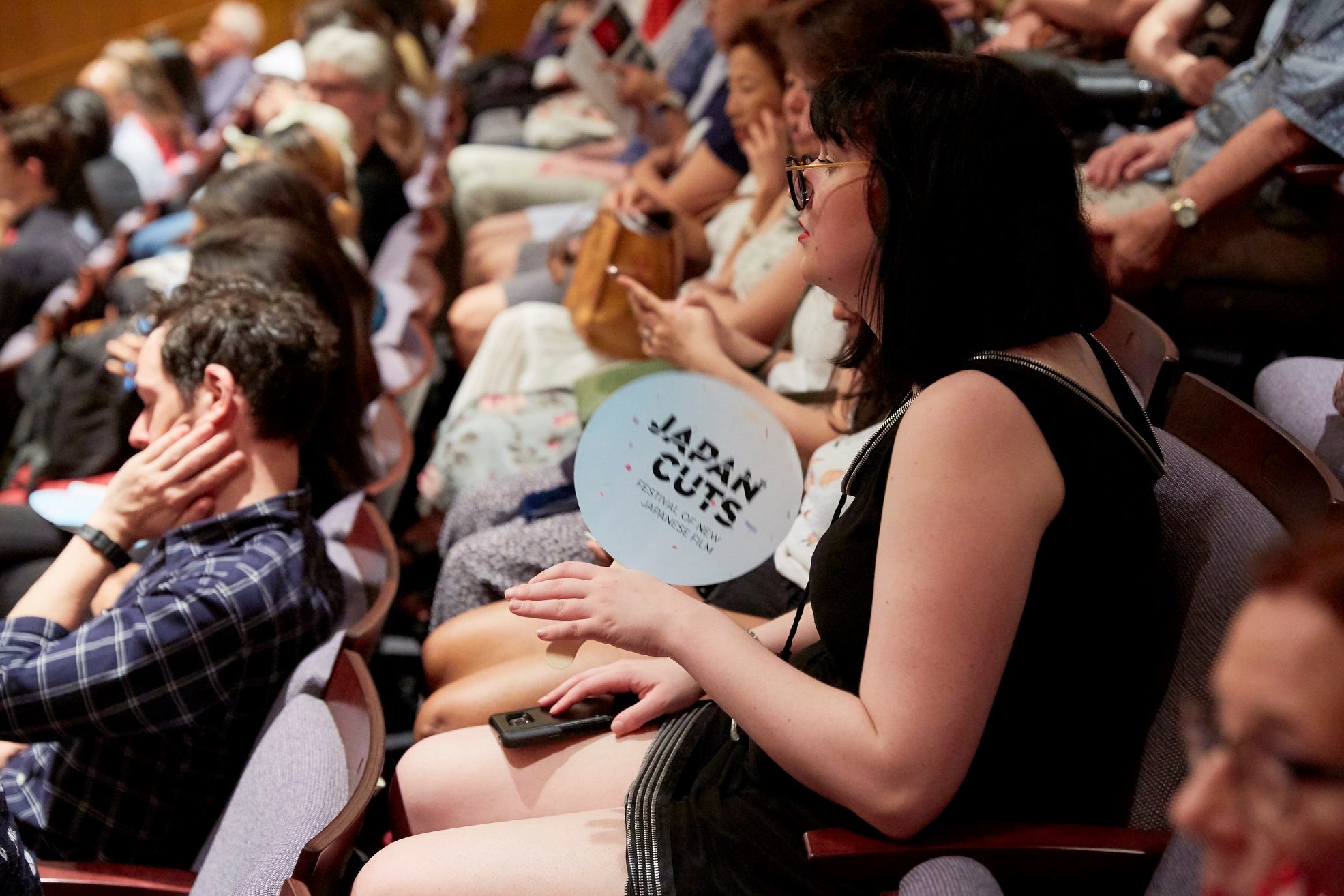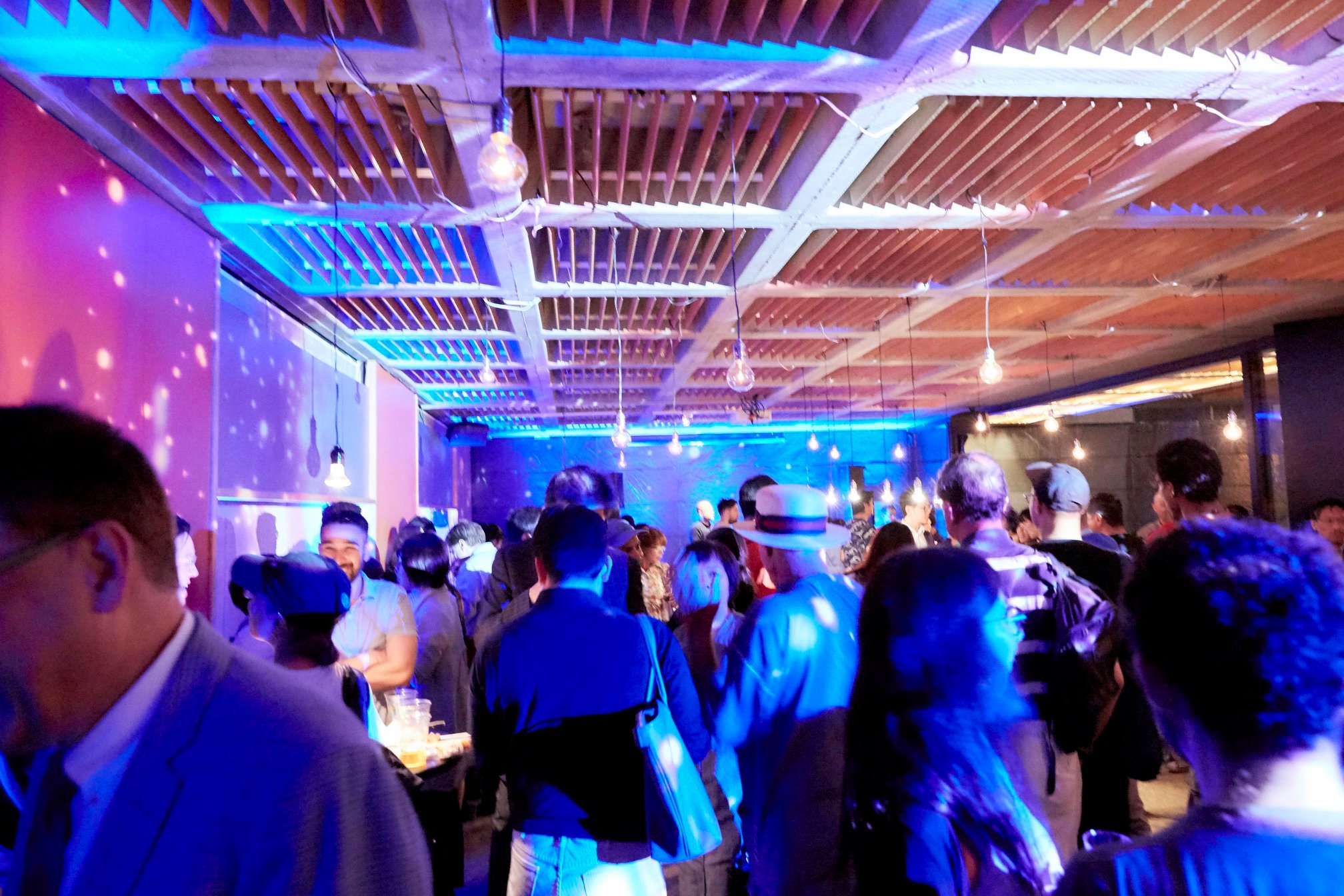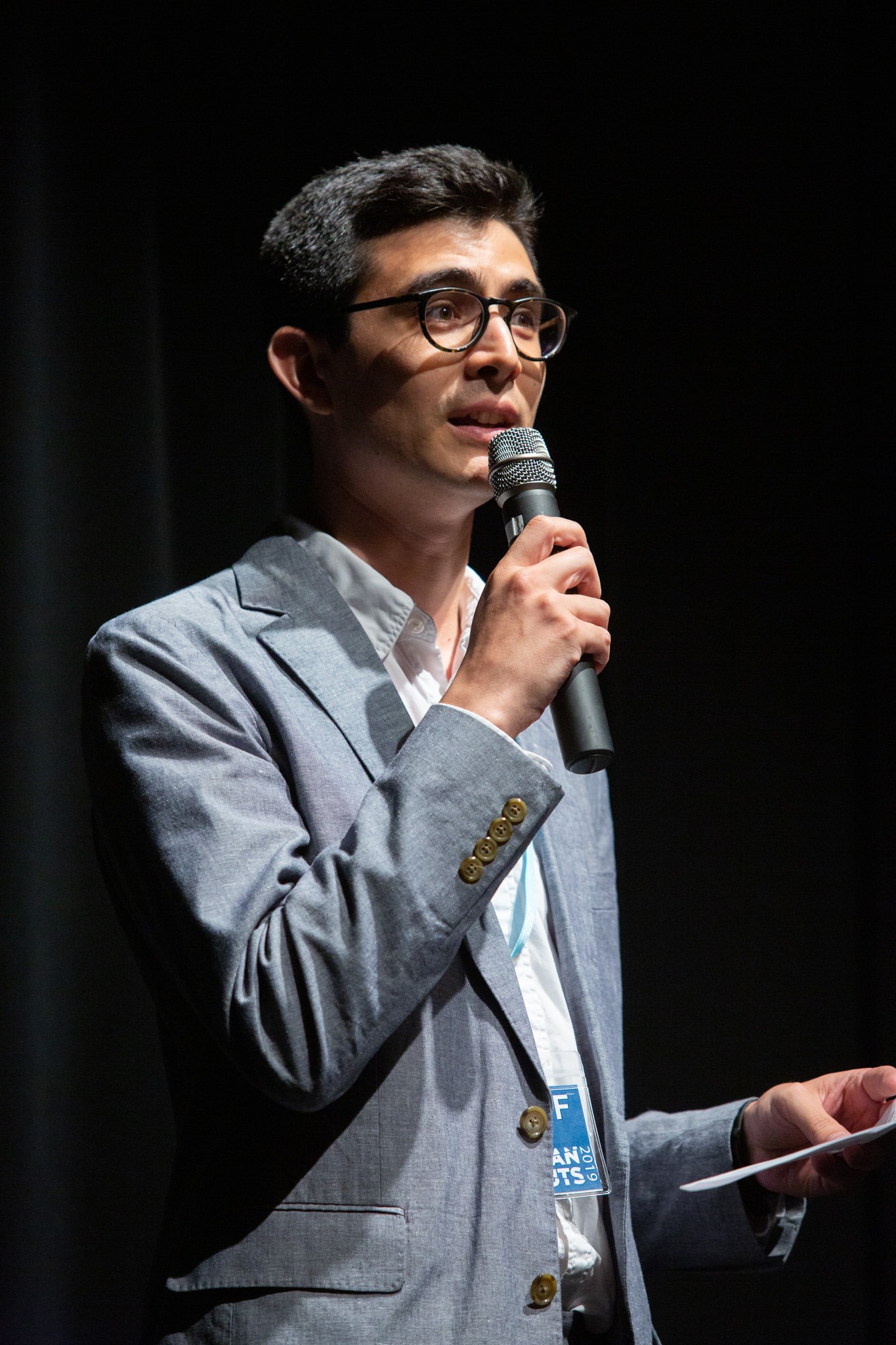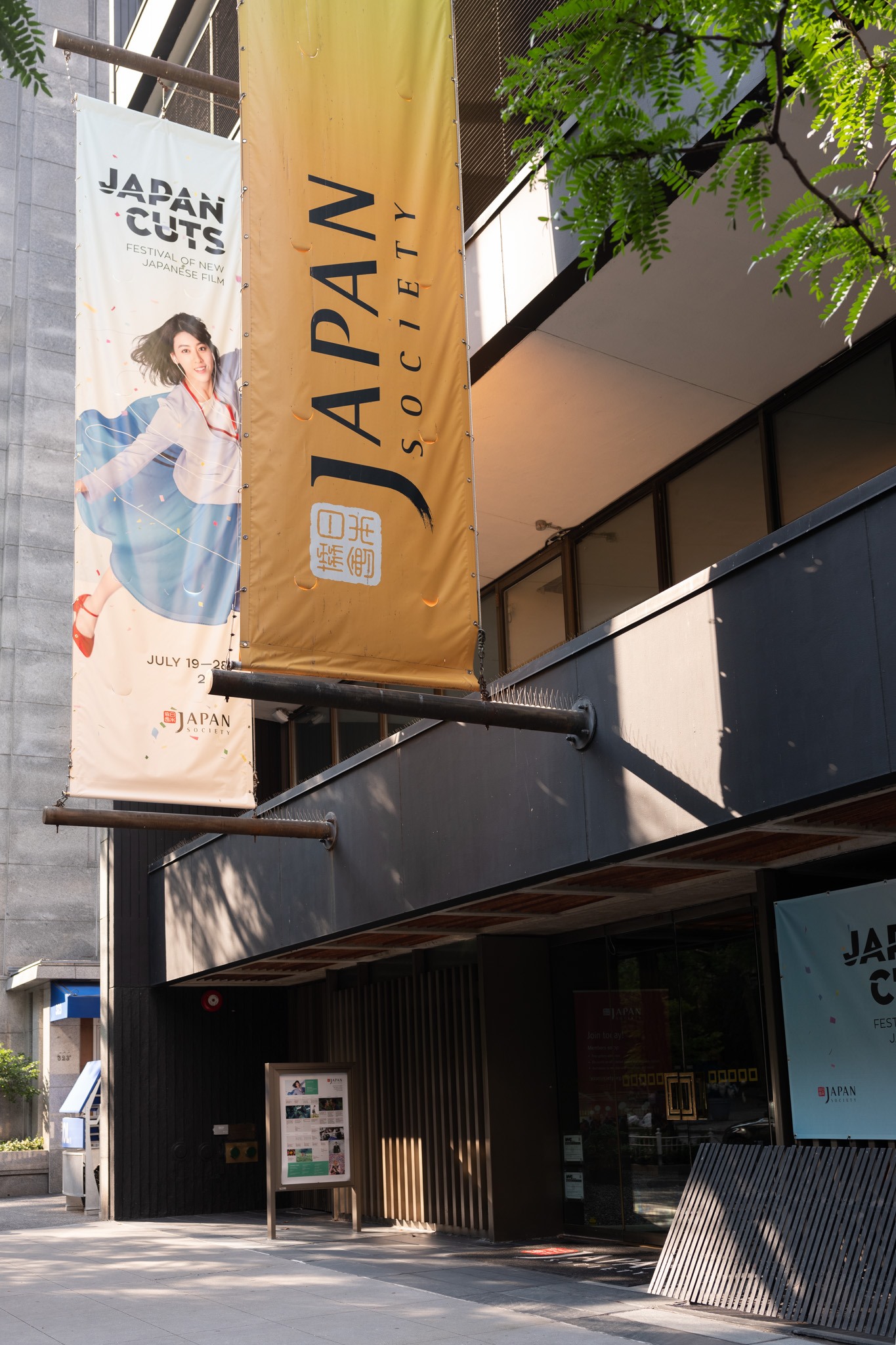Foreign movies provide us with unique opportunities to learn new things and perspectives and open up a whole new world for the audience. Out of countless film festivals organized all over the world, Japan Cuts has been steadily building a reputation as one of the leading film festivals featuring contemporary Japanese films in the U.S. with solid, thoughtful, yet inventive programming. The festival, which was founded in 2007, is presenting its 15th edition this month in a hybrid format of online and in-person screening.
I asked K. F. Watanabe, the Deputy Director of Film at Japan Society and one of the programmers of the festival, about this year’s festival and the curatorial process, including his thoughts and theories of the uniqueness of Japanese cinema.
The festival will be a celebration of cinema and global community.
ーーWhat will be the theme and the highlights of this year’s Japan Cuts?
K. F. Watanabe: We never go into the festival with a predetermined theme. We make the selection piece by piece and film by film with the goal of putting together a nice, balanced lineup, which is usually made up of studio films, independent films, documentaries, shorts, experimental work, and classics. After we’ve accumulated all the films, we try to take a step back to see if there’s any connecting thread or not. This year, the films will be mostly online, but we will do some screenings in our theater. This will be the first time we’re opening our auditorium in 18 months or so. For that portion of the festival in the theater, we decided to select some films that are more audience-friendly, and more exciting to watch on the big screen. In doing so, there was kind of a coincidence where we saw a theme of the joy of cinema. We have a few movies that are reflexive and are about filmmaking or about the experience of watching cinema such as Masayuki Suo’s Talking the Pictures and Soushi Matsumoto’s It’s a Summer Film! It’s a nice fit thematically for the return to the theater.
ーーHow do you pick the films and select the lineup?
The selection of the films is a year-round process. The festival usually takes place in July. We take a break in August, and as early as October, we start collecting screeners from distributors and filmmakers, which ends up being a nine-month correspondence. In the fall, the Tokyo International Film Festival and the Busan International Film Festival take place and these are both important Asian film festivals with a strong representation of Japanese filmmakers. We start to look at films from those two events and it gets busier after the new year from February onwards.
I’ve been working at Japan Society since 2014. Since then, Japan Cuts has been programmed by a three-person team. Along with the two Japan Society film staff members, including myself, we’ve been working with an outside programmer named Joel Neville Anderson.
ーーWhat do you hope the audience will gain from the film festival?
With every festival, we hope that, first of all, the audience has a good time. We hope they enjoy seeing the films or gain something from it —whether they learn something, find a new favorite filmmaker, or are exposed to something they didn’t know about that piques their interest or even challenges them. This year, in particular, we’re hoping that the festival will be a celebration of cinema and global community. We want to celebrate our shared love of and interest in cinema. I hope audience members can feel like they’re part of a community of Japanese film lovers, whether they’re watching online or in person.
There are certain unique genres that are popular with mainstream audiences in Japan that also have an audience here.
ーーRecently, you streamed Kazuo Hara’s film over the last one month period. Do you like his film and what aspect of his work are the most appealing to the audience in New York and in the U.S.?
Watanabe: It’s always interesting to compare the reception of a filmmaker’s work per country, especially in comparison to their home country and abroad. There are certainly some filmmakers from Japan who are more celebrated or taken more seriously outside of their home country. As for Kazuo Hara, I’m less aware of how he’s received in Japan. I can’t make a direct comparison, but he’s one of the few Japanese documentarians that film lovers can name in the U.S. Japanese documentary filmmakers have less of a profile or presence in the international film landscape. There are probably only a couple of documentarians that people can name. And he is one of them. It’s primarily because of The Emperor’s Naked Army Marches On, which had a very successful festival run in the U.S. and created some buzz, especially after it was endorsed by Michael Moore and Errol Morris, two of the most famous American documentary filmmakers. I don’t know the exact history of how his name became more known in the U.S., but I believe it has to do with that film and those endorsements. For anyone interested in documentary, he has a lot to offer. I think the way he approaches documentary is quite unique. He mixes the personal with the political and the observational with direct action. The ethics of his films are always very messy. He doesn’t present one point of view. You have to wrestle with the material. In that sense, I think it’s rich for film goers and academics. He has probably been written about more in English than other Japanese documentarians, and there is a wonderful book about his work that is translated in English, which probably helps.
ーーWhat is the appeal and the uniqueness of Japanese cinema for you?
Watanabe: The Japanese cinema has a unique quality and it’s hard to put into words. You know it when you see it. The Japanese film industry is quite hermetic and films are primarily made for a domestic audience. It’s less interested in developing an international audience because it doesn’t need to—the domestic audience makes enough money for them. The overall approach of the film industry is inward looking, which has its problems, especially when the international viewers want to have access. There are certain types of narratives that are unique to Japanese cinema: J-horror or the yakuza genre, for example. There’s kind of a film language that one becomes aware of when you watch Japanese films over and over again. Since they have their own system of working, their own crews who work a certain way, and cinematographers who shoot a certain way, and so on. That expresses itself visually. There are many exceptions, but if we are talking about generalities, that’s certainly the case.
ーーHow does the popularity of certain aspects of Japanese culture affect your programming decisions for Japan Cuts?
Watanabe: There are some things that are sure bets for audiences. For example, jidaigeki or samurai films, films about food, or films featuring a cute cat. There are certain unique genres that are popular with mainstream audiences in Japan that also have an audience here. We certainly want to include those types of films while maintaining the overall balance of the lineup like I mentioned before. We are always looking out for period films, for example, because we know our audience enjoys them, but it’s hard to find good ones sometimes. Our biggest surprise hit was in 2014 when we showed a silly comedy called Neko Samurai starring Kazuki Kitamura—the response was overwhelming.
Another thing that’s obviously popular is anime, which is probably the number one export of Japanese culture abroad and certainly in the U.S. where it’s insanely popular. It’s actually hard for us to show any anime because it’s almost a separate industry. There’s different avenues and channels that anime will go through within the U.S. and the good ones will almost always get sold right away to a U.S. distributor with their own release agenda, so the festivals become irrelevant. We always look out for some anime, but it is difficult for us to include it in the festival.
I believe audiences come because they get to see and experience cinema in a way they cannot at home or even at the megaplex.
ーーWhat is the film that you never showed at the festival that you would have secretly wanted to show?
Watanabe: I wish we had a chance to premiere Shin Godzilla with Shinji Higuchi and Hideaki Anno in person because I’m a big fan of the film and their work. Along with the film, it would have been great to have them select some kaiju and tokusatsu movies that they like and show some of their previous work as kind of a sidebar for the festival. Toho is impossible to work with, though. I have given up on trying. I wish we could premiere Shin Ultraman, too, but alas…
ーーWhat is the challenge for film programming these days? The landscape is overcrowded with various streaming services nowadays and I am sure it’s not easy to bring people to the film festival.
Watanabe: It all comes down to money; securing funds will always be the biggest challenge for film programming. My experience is limited to organizing screenings as a non-profit in New York City, which has one of the richest film cultures in the world, but even here it can be difficult to get enough butts in seats to break even. The government by and large does not care about the arts in this country and grant opportunities are slim, leaving institutions such as ours to depend on corporate sponsorship or donations from individual donors, to whom we become beholden, often resulting in some compromise to the integrity of the programming. It’s not a healthy situation. And then of course we have to compete with mega corporations like Netflix, Amazon, and Disney that devalue cinema as “content” to be easily consumed without commitment. In the worst case, I think it suggests a false equivalency wherein streaming something from home while scrolling Instagram is the same as watching a film in a theater when that’s not true at all.
But I don’t want to sound too negative. In truth, at least in New York, there are plenty of people that are interested in original film programming, in being challenged and taking a chance on something that isn’t approved by a Tomatometer. In 2019 we had about a 70% occupancy rate for Japan Cuts, which showed 30 films over the course of 10 days. I think that’s really remarkable. I believe audiences come because they get to see and experience cinema in a way they cannot at home or even at the megaplex. There is a lot to say about sharing a space and watching a hard-to-see film with a room full of strangers who are there for similar reasons. As long as audiences like that continue to exist, film programming can exist.
We should not take it for granted, though. Many arthouse cinemas could not survive the pandemic, even iconic spaces that have served communities for decades. Even last week we heard news that SFMoMA decided to shut down their film program. We have to invest in the things we value, and film programmers should work to create screenings, programs, and events worth valuing.
K. F. Watanabe
K. F. Watanabe has been a staff member within the Film department at Japan Society in New York City since 2014. He has been serving as Japan Society’s Deputy Director of Film since 2018. He manages daily operations and oversees year-round film programming for the organization including JAPAN CUTS: Festival of New Japanese Film, the largest festival of contemporary Japanese Cinema in North America. He received his M.A. in Cinema Studies from NYU Tisch School of the Arts in 2011 and a B.A. in English from Montclair State University in 2009. Prior to Japan Society, he worked at Film at Lincoln Center as a House Manager. His writing on film has appeared in Film Comment, The Brooklyn Rail, The Current (The Criterion Collection), and Notebook (MUBI), among other publications.
Photography Mike Nogami
Translation Fumiko.M





